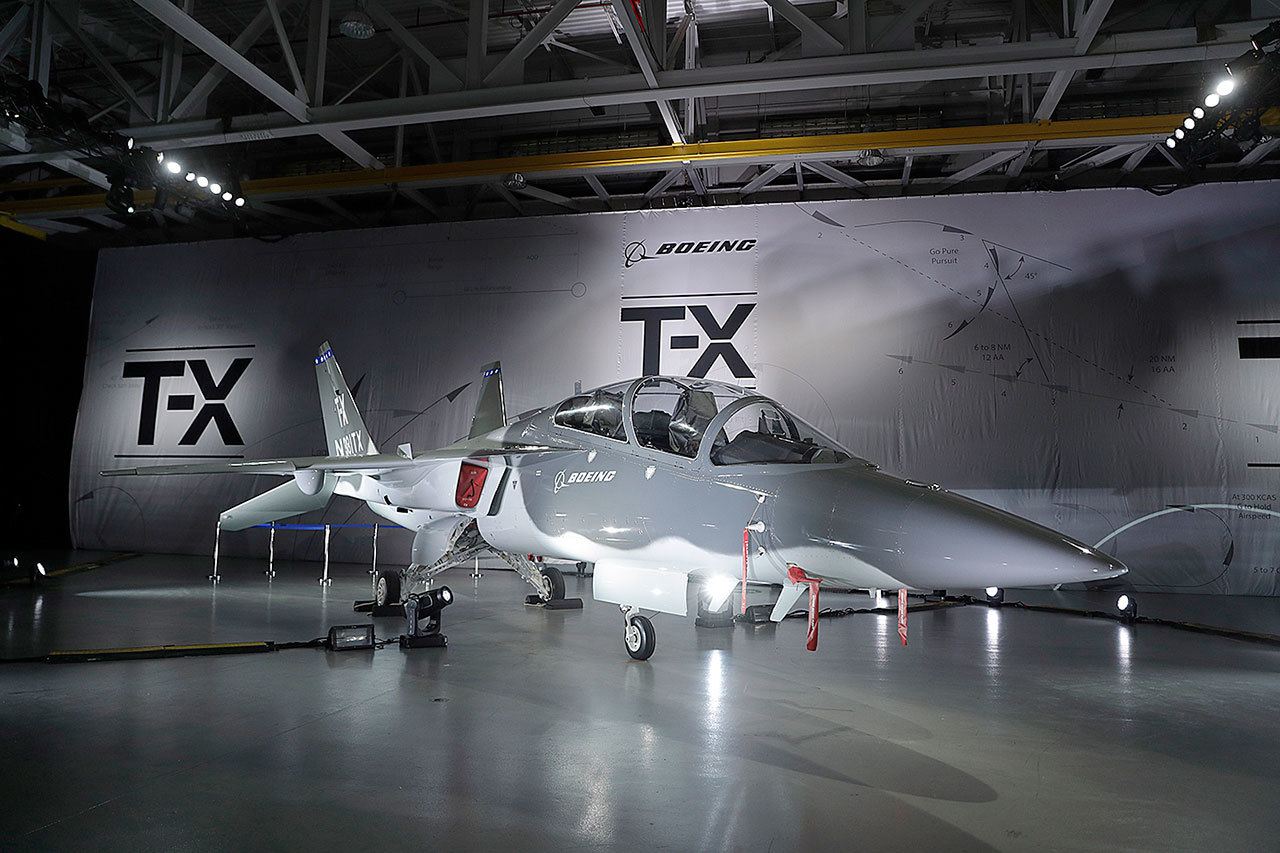By Julie Johnsson
Bloomberg
Boeing’s future in the fighter-jet business may ride on the Air Force’s $11 billion contest for a new trainer aircraft, with the planemaker’s factory hub in St. Louis on the line.
The world’s largest aerospace company faces a dogfight with Lockheed Martin, Northrop Grumman and Raytheon for the contract to produce about 350 jets through the T-X advanced trainer program. The winning entry would replace the aging T-38 fleet on which U.S. military pilots have honed their flying skills since 1961.
Boeing is the last of the major defense contractors to reveal its concept, developed with Sweden’s Saab, for the competition that kicks off late this year. And there’s more than a little symbolism to the site the company chose for Tuesday’s event to unveil the design: the manufacturing center where it churns out F/A-18 Super Hornets and F-15 fighter jets.
“This is their last chance to provide a next-generation dedicated military aircraft for the company and St. Louis,” said Richard Aboulafia, an aerospace and defense analyst with Teal Group. “The Super Hornet can go on for another five years easily, and ditto for the F-15. But the bridge to a sixth-generation fighter would depend on some kind of combat version of this.”
Military aircraft contests are few and far between in an era of budget constraints, and the Chicago-based planemaker needs new orders to preserve the Missouri industrial base and engineering acumen gained with the 1997 acquisition of McDonnell Douglas Corp. Boeing’s military arm has been eclipsed by the rapid growth of the commercial jet unit this decade, with the defense division accounting for 31 percent of sales last year compared with 50 percent in 2010.
The manufacturer has suffered high-profile losses: last year’s stealth bomber competition to Northrop Grumman, and the joint strike fighter contest to Lockheed’s F-35 in 2001. Boeing’s largest recent contract win, valued at $51 billion, is for an aerial refueler derived from its 767 jetliner, which is manufactured outside Seattle.
The winning T-X design may go on to claim hundreds of overseas orders and spare parts stretching over decades. The Pentagon program is expected to spur other countries to upgrade their trainer fleets. Teal Group forecasts a global market for 2,737 turbine trainers valued at $32.3 billion over the next decade, a large increase from the $19.9 billion of the aircraft delivered from 2006 through 2015, according to a June research report.
The Air Force isn’t expected to release final contest criteria until December, picking a winner next year who would begin production in fiscal 2018. While the need for a modernized training fleet is certain, funding may be squeezed by programs like the F-35 fighter, KC-46A tanker and a new stealth bomber, the Congressional Research Service said in a December 2015 report.
What’s also uncertain is how the Air Force will weigh an aircraft’s performance against its production costs. Boeing and Northrop may be at a disadvantage since they are bidding clean-sheet designs against in-service models: the T-50A offered by Lockheed and Korea Aerospace Industries, and Raytheon’s T-100, based on Leonardo’s M-346 trainer.
Aboulafia thinks the Lockheed aircraft has an edge “as the only off-the-shelf, supersonic design.”
By teaming with Sweden jet-fighter manufacturer Saab, Boeing gained a way to tamp down costs and jump-start sales in international markets, said George Ferguson, an analyst at Bloomberg Intelligence, said in a telephone interview. “There’s a reason why a number of these teams teamed up with foreign participants,” he said.
Talk to us
> Give us your news tips.
> Send us a letter to the editor.
> More Herald contact information.

























